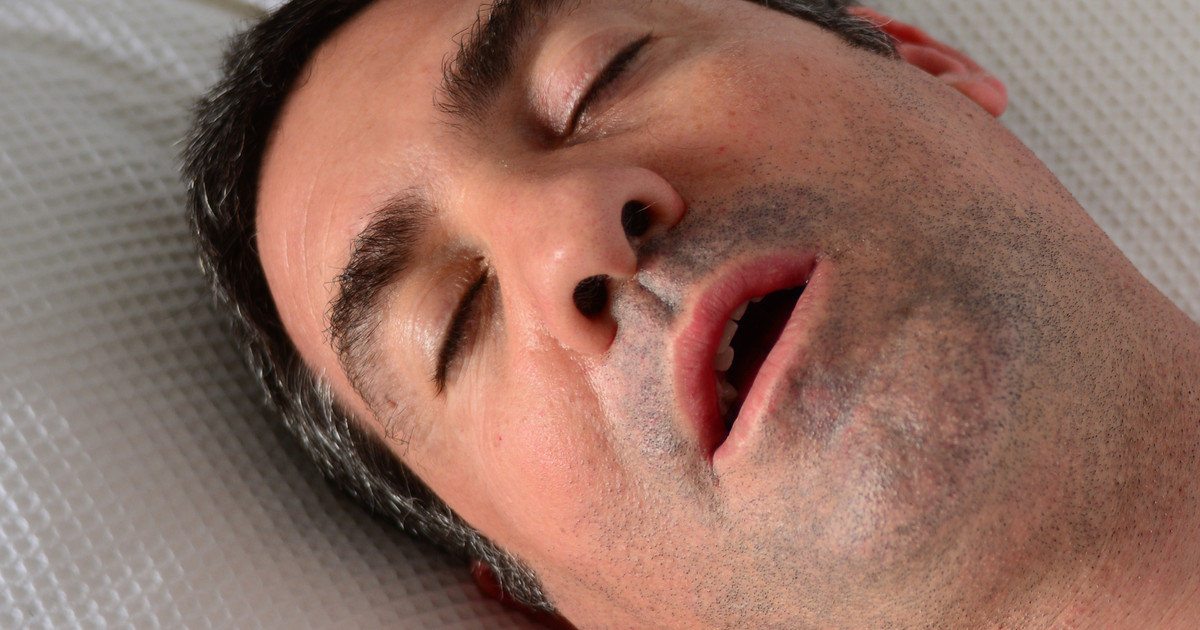Serious Symptoms Of Muscle Atrophy
Muscle atrophy is a condition in which an individual's muscle mass is decreased. In fact, the muscle may partially or completely waste away. Patients can develop this condition because of the aging process. It could also occur due to broken bones or spinal cord and nerve injuries. Burns, malnutrition, strokes, and long-term corticosteroid use place a patient at a higher risk for muscle atrophy as well. For some individuals, muscle atrophy may be a complication of an underlying medical condition, such as muscular dystrophy, neuropathy, polio, and amyotrophic lateral sclerosis. Patients may be asked to have blood tests, x-rays, CT scans, nerve conduction studies, and electromyography to diagnose muscle atrophy.
Thankfully, patients have options when it comes to treatment for muscle atrophy. Patients often receive physical therapy for muscle atrophy. Of course, muscle atrophy treatment varies depending on the underlying cause. When it is caused by malnutrition, doctors generally prescribe supplements for muscle atrophy. Muscle atrophy surgery may be suggested to correct the contracture deformities. The best treatment starts with understanding the symptoms. Learn about them now.
Reduced Muscle Mass

Reduced muscle mass is one of the most common symptoms that patients with muscle atrophy experience. Reductions in muscle mass contribute to limb weakness. Individuals with the condition may have one arm or leg noticeably smaller than the other. Doctors can perform a physical examination to check for reduced muscle mass. They will compare the size and strength of the muscles on one side of the body to the other. Suppose the reductions in muscle mass are caused by aging, inactivity, injury, or malnutrition. In that case, patients may be able to reverse the reduction by participating in physical therapy or starting an exercise program.
Keep reading for more information on the symptoms of muscle atrophy now.
Extended Period Of Inactivity

Not only does muscle atrophy tend to develop after an extended period of inactivity, but it can also be a strong indicator of the condition. For example, individuals who have recently had surgery may notice muscle atrophy if they are bedridden and unable to be physically active for weeks or months. Patients who have a cast to heal a broken bone can see their affected limb atrophy since the cast limits mobility in the area. Workers whose jobs involve long periods of sitting at a desk could also see some degree of muscle mass reduction. Individuals already dealing with muscle atrophy may not want to be active due to weakness. However, physical activity is key.
Patients scheduled for surgery should ask their healthcare team about incorporating physical therapy and activity into their recovery process to prevent muscle atrophy. They should aim to stand and walk as soon as possible after their operation. It can also be helpful to perform grip strengthening exercises with the hands, including squeezing exercises and writing. Individuals who have a broken bone may want to ask their orthopedist about ways they can safely move their affected limb while it is in a cast. Workers who sit for long periods may be able to prevent and treat muscle atrophy by taking a short walk or performing stretches every thirty minutes.
Continue reading to learn more about the symptoms of muscle atrophy now.
Limb Weakness

Reductions in muscle size cause reductions in the strength generated by the muscles. This often leads to limb weakness. If a patient's arm is affected, they may notice it is difficult to perform everyday tasks. Examples include writing, picking up a cup, or carrying a shopping bag with the affected arm. Chopping food may be difficult as well, and the patient may drop items more often than usual. If the legs are affected, patients may have difficulties walking and climbing stairs. They may feel as though their legs will not support them, and as a result, may need to sit down frequently and take longer breaks.
Limb weakness can be a sign of several serious medical conditions. Thus, this symptom should always be evaluated by a medical professional. During the exam, doctors can test the patient's strength by asking them to use their hands and feet to push against the doctor's hand. If weakness is present on one or both sides of the body, doctors may recommend x-rays or scans to assess the underlying cause. Patients may be able to build strength in their limbs by performing strength training exercises under the guidance of a physical therapist.
Uncover more symptoms of muscle atrophy now.
Issues With Balance

Muscle atrophy in the legs may contribute to issues with balance. As the leg muscles reduce in size and strength, they are less able to support the patient's weight. Since one leg is usually more affected than the other, patients will often have an altered gait. They may lean away from the weaker side while walking. Patients with severe levels of muscle atrophy could drag their feet while walking instead of picking them up.
Since issues with balance place the patient at a high risk for falls, doctors may recommend walking aids, such as canes or walkers. Patients should ensure that they are trained in the proper use of this equipment. They should still sit down whenever they feel unsteady. In fact, many walkers are made with a seat in the middle for this purpose. Doctors may suggest physical therapy for some patients to improve balance and mobility. The physical therapist can instruct the patient in specific maneuvers that may make it easier to go up and down stairs. Performing these could decrease a patient's risk of falling.
Keep reading for more details on muscle atrophy symptoms now.
Numbness And Tingling

Muscle atrophy can occur in conjunction with neuropathy. Patients with both of these conditions could experience numbness and tingling, especially in the hands and feet. These symptoms are often the result of nerve damage, and a neurologist should evaluate patients dealing with them. During the exam, the neurologist will check the patient's sensation. This is typically done by touching a cotton swab or a blunt pin to specific areas of the hands, arms, legs, and feet. The patient will be asked what they can feel. Doctors may recommend nerve conduction studies, electromyography, or an autonomic reflex test to determine the cause of numbness and tingling.
Topical treatments, including capsaicin cream and lidocaine patches, can treat mild numbness and tingling. Pain relievers, antidepressants, and anticonvulsants may be beneficial in symptom management for more severe cases. Doctors may also suggest physical therapy or the use of transcutaneous electrical nerve stimulation. Patients should always let their doctor know if they notice an increase in numbness and tingling or if it spreads to new areas of the body.
Uncover additional information on the symptoms of muscle atrophy now.
Difficulty Speaking And Swallowing

Many individuals dealing with muscle atrophy will also experience some amount of difficulty speaking and swallowing. These difficulties often appear as symptoms when an affected individual's muscle atrophy is linked to another underlying condition, such as amyotrophic lateral sclerosis. It is also worth noting that difficulty speaking and swallowing are among the wide collection of neuromuscular symptoms that are often seen due to muscular atrophy. Difficulty swallowing and speaking are also common symptoms of muscle atrophy when patients are dealing with this condition if malnutrition is the underlying cause or part of it.
Continue reading to learn about more warning signs of muscle atrophy now.
Difficulty Breathing

Some patients with muscle atrophy experience difficulty breathing as a symptom of their condition. This symptom is particularly common when patients are dealing with spinal muscular atrophy. The reason is linked to weakness in the muscles that support the patient's chest wall. These muscles are also called the intercostal muscles. When these muscles are weak, it forces the patient's diaphragm to take on most of the effort of breathing. Over time, this results in difficulty breathing. Of course, difficulty breathing can also appear when a patient's muscle atrophy is due to a condition like muscular dystrophy. Specifically, patients with muscular dystrophy often experience difficulty breathing when they are asleep first.
Discover additional symptoms of muscle atrophy now.
Impaired Coordination

Many patients dealing with muscle atrophy will see impaired coordination as one of their symptoms. In most cases, impaired coordination appears alongside issues with balance. Since muscle atrophy means that an individual's muscles are imbalanced, such as one leg being significantly smaller than the other, it is common for patients to find that they do not work in the same way as each other. After all, one is compromised. Impaired coordination may be more noticeable if a patient is experiencing muscle atrophy involving one of their arms. Physical therapy is a significant treatment when individuals are experiencing impaired coordination.
Learn more about the symptoms associated with muscle atrophy now.
Facial Weakness

Facial weakness is a significant symptom of muscle atrophy, especially when a patient is dealing with an underlying condition. Examples of these underlying conditions include multiple sclerosis, amyotrophic lateral sclerosis, and some forms of muscular dystrophy. These conditions often trigger muscle atrophy as muscle weakness first. As the conditions progress, patients will start to notice facial weakness. In many instances, a patient's facial weakness will begin on one side of their face. In fact, the weakness may stay on one side of the affected individual's face. Treatment for facial weakness must come from treating muscle atrophy and the underlying condition. However, patients can learn some adaptive techniques through physical and occupational therapy to help them live normally.
Discover another symptom of muscle atrophy now.
Memory Loss

Quite a few individuals dealing with muscle atrophy will experience gradual memory loss. Memory loss is among the neuromuscular symptoms that can appear alongside muscle atrophy. However, it is vital to note that memory loss is not common when a patient's muscle atrophy is the result of an issue such as a broken arm or leg. Gradual memory loss is more common when a patient's muscle atrophy is due to a medical condition, particularly multiple sclerosis. It is worth understanding that memory loss linked to muscle atrophy, in many instances, can be managed once patients begin receiving treatment for the underlying condition that triggered their muscle atrophy and memory loss.
